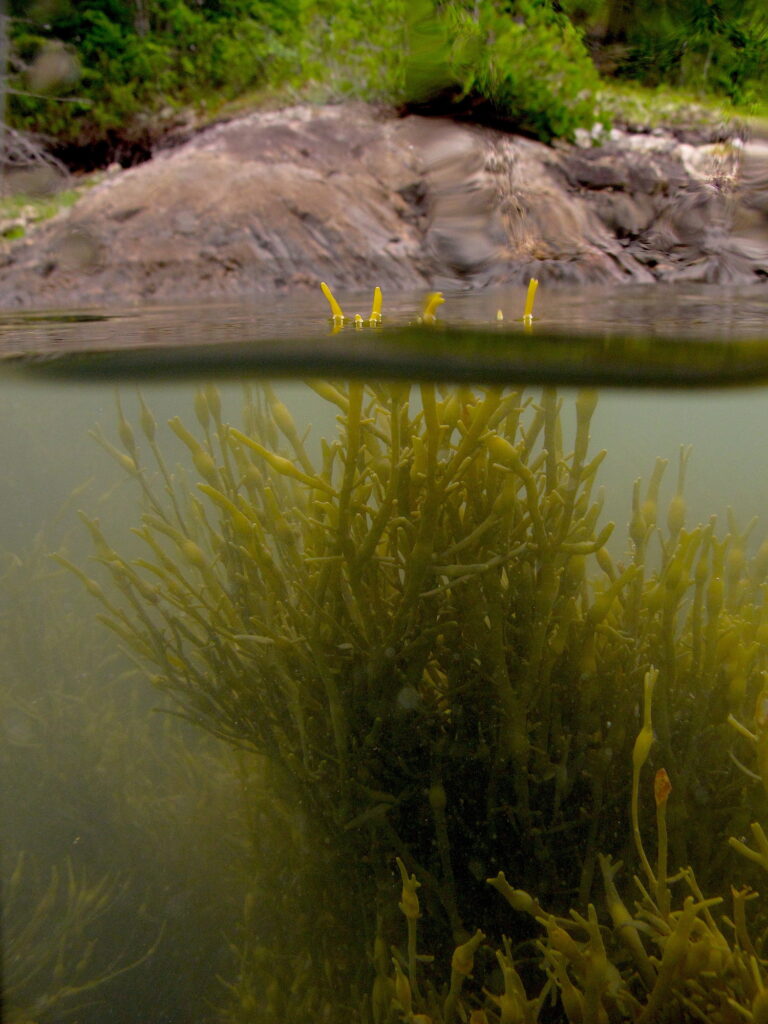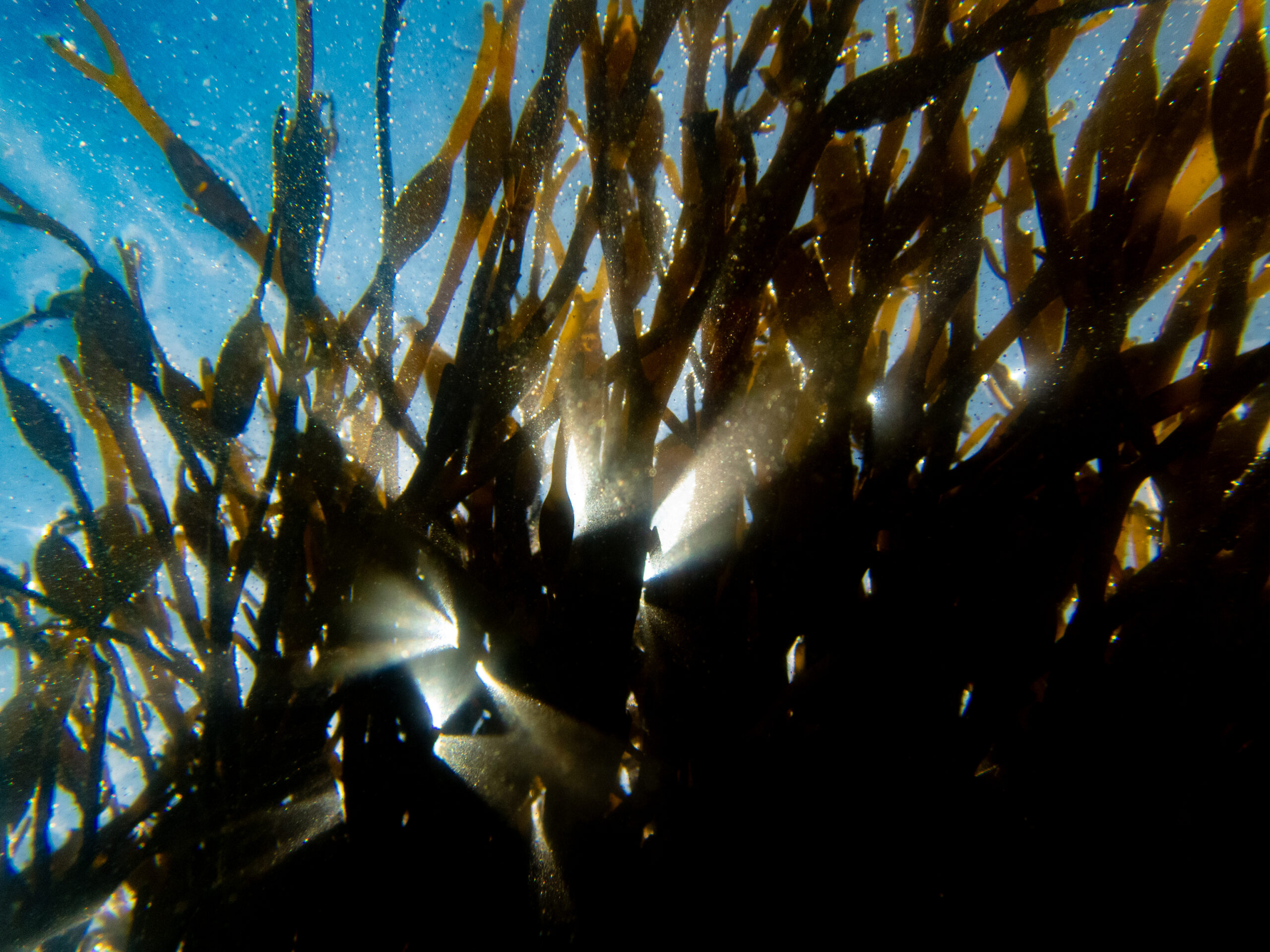What is Rockweed?
Rockweed (Ascophyllum nodosum) is a large, slow-growing, and long-lived seaweed of the rocky intertidal zone that is vulnerable to over-harvesting. Its ubiquitous, olive green and brown fronds are iconic to the Maine coast. The plants, which are technically algae, have a fan-like structure with forked branches that divide further as they grow, producing a single air bladder per year on each branch. Air bladders lift the fronds towards the sun as the tide rises and falls. Established plants resemble tall, underwater trees and can live for decades if the sturdy holdfast at the base of each plant is undamaged. To reproduce sexually, gametes from separate male and female plants fuse to form a fragile embryo that must find a foothold on bare rock. Rockweed is not a true kelp and it is not used in aquaculture.
Why Conserve Rockweed?
Rockweed thrives in Maine’s sheltered coves and rocky ledges where it provides an essential habitat for many marine species. At high tide, the floating fronds create an underwater forest where small fish find food and shelter. At low tide, exposed rockweed plants are draped over each other, protecting other marine species from harsh conditions. The decomposing biomass of older rockweed plants stimulates productivity in coastal food webs and forms drift lines on beaches and mudflats where shorebirds feed.
Rockweed has been valued as a fertilizer for centuries, but industrial-scale use of rockweed for agriculture and animal food additives presents new challenges. Harvesting by commercial companies has damaged rockweed beds in parts of Nova Scotia. In Maine, companies are allowed to cut the plants down to 16 inches and vast amounts of extraction are permitted. Consequently, intensive harvesting has the potential to convert a foundational rockweed “forest” into a motley collection of dense “shrubs.” For more information, see Ecology and Management
Videos
An underwater view of the natural history of rockweed forests (1.5 min).
About Us
The Blue Hill Peninsula Rockweed Forum
We are an association of year-round and summer residents who seek to educate ourselves and share knowledge with the public about the ecological, aesthetic, and commercial value of natural rockweed beds. We also work with landowners and local organizations on strategies to prevent or mitigate impacts of commercial over-harvesting of rockweed. Our founding members include two retired botany professors, David Porter and Allison Snow.
The Blue Hill Peninsula includes the towns of Blue Hill, Brooklin, Brooksville, Castine, Penobscot, Sedgwick, and Surry, and is connected to Little Deer Isle, Deer Isle, and Stonington. We invite people from these towns and other areas to join our mailing list, send us your comments, and participate in our events and activities. Here is a recent newsletter and a webinar (“Seaweed: A Vital Resource and Habitat”).
The conservation goals of our independent local group overlap with those of the Maine Rockweed Coalition. We interact with the Friends of Blue Hill Bay, the Bagaduce Watershed Association, and many other local organizations that are working to preserve and protect natural areas.
Contacts:
David Porter, PhD, porterd@uga.edu; Brooklin
Allison Snow, PhD, snow.1@osu.edu; Brooksville
Logo: Fran Ornstein

https://www.instagram.com/erikhoffner/


